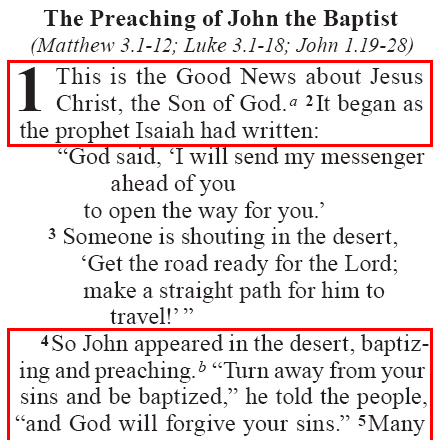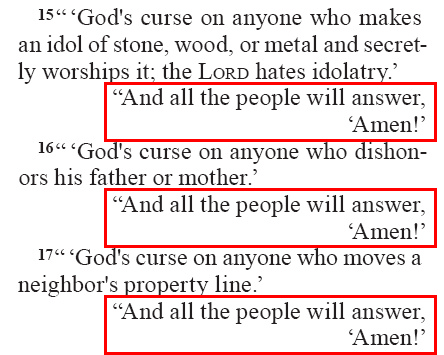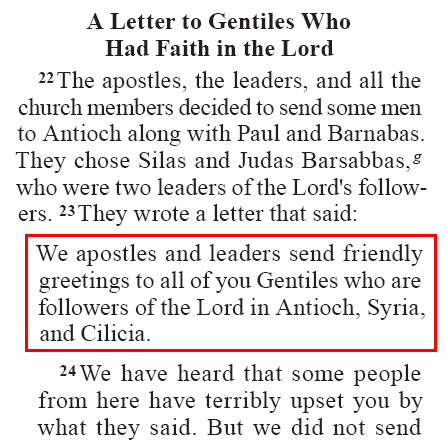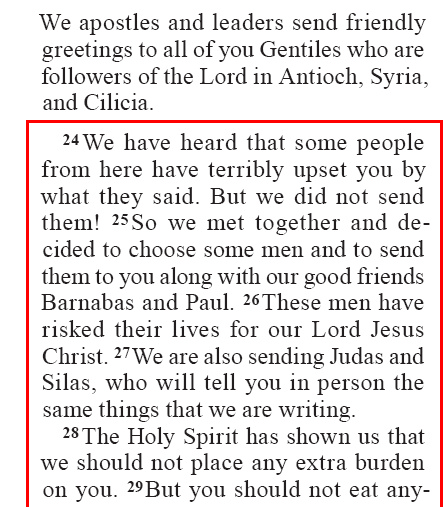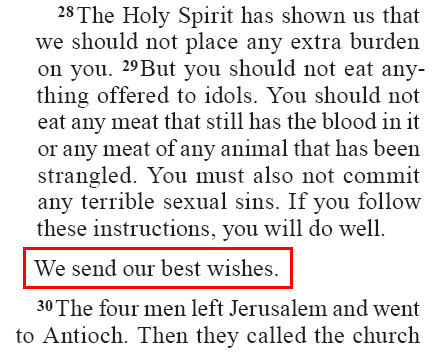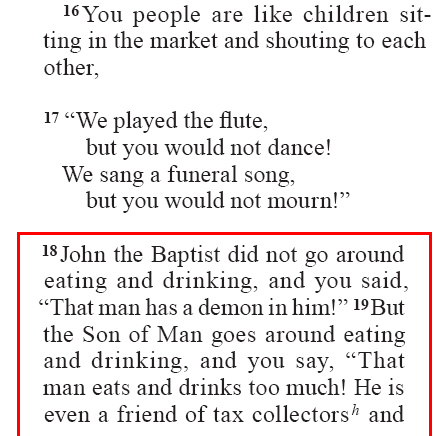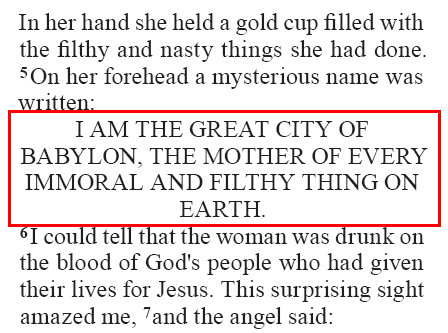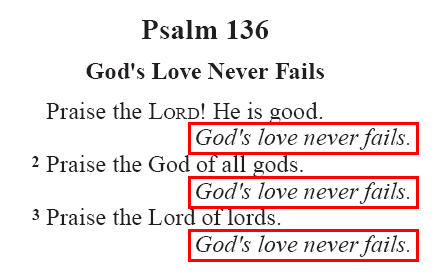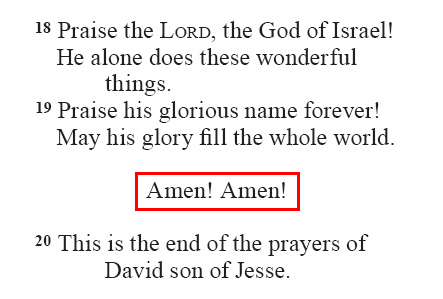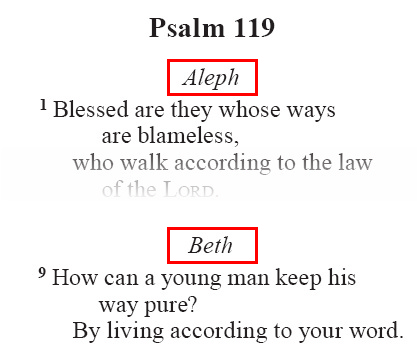<para> @style Types¶
Note
Numbered <para> @style Attributes
Some @style attributes include an optional numeric variable, which is represented in this documentation by a hash character (#). In USX the attribute number indicates:
A portion of a complete element, or relative weighting of the “pieces” of the elements, such as mt1, mt2, mt3 which are all parts of a major title.
The level of division (hierarchy).
The level of indentation relative to other like elements, as in poetry (q#) or lists (li#) or outlines (io#).
style = style1 — The unnumbered version of a style attribute may be used when only one level of this paragraph style exists within the project text. Numbers should always be included when more than one level of the paragraph style exists within the project text.
Identification¶
h¶
- @style
h
- Use
Running header text.
Deprecated use of numbered variable syntax (use is strongly discouraged).
The variable # in<para style="h#">text...</para>represented distinct components or levels of text required for the running header presentation (e.g. inside, outside, sub-division/section etc.).- Valid In
Formatting Sample - Matthew
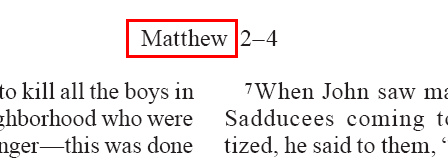
toc3¶
- @style
toc3
- Use
Book abbreviation.
- Valid In
Note
About toc1, toc2, toc3
The metadata.xml file within a DBL text release bundle contains a bookNames element in which each scripture book is itemized together with child elements for its long, short and abbreviated forms. The bookNames element is the key location where this book naming metadata is contained within the bundle. USX para elements with attributes toc1, toc2, or toc3 are strictly optional data. Their presence in a USX file is valid, but reflects a legacy form of USFM markup in which the USFM files for each book were the key location for this book naming metadata.
toca1¶
- @style
toc1
- Added
3.0
- Use
Alternative language long table of contents text.
Used to specify an alternate set of table of contents texts (for example, in a language of wider communication). Also with toca2 and toca3.- Valid In
toca3¶
- @style
toca3
- Added
3.0
- Use
Alternative language book abbreviation.
- Valid In
Introductions¶
imt#¶
- @style
imt#
- Use
Introduction major title.
# denotes the title level or relative weighting.
imt = imt1 (see notes on numbered @style attributes)- Valid In
Formatting Sample - Introduction to Mark (RVE)
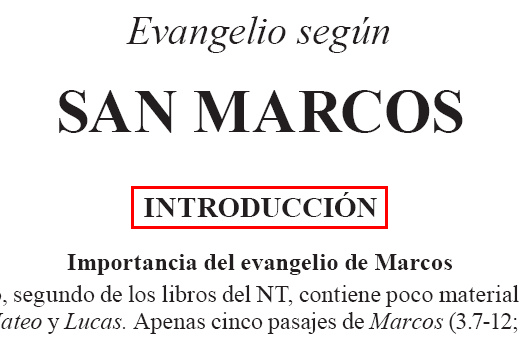
is#¶
- @style
is#
- Use
Introduction section heading.
# denotes the title level or relative weighting.
is = is1 (see notes on numbered @style attributes)- Valid In
Formatting Sample - Introduction to Mark (RVE)
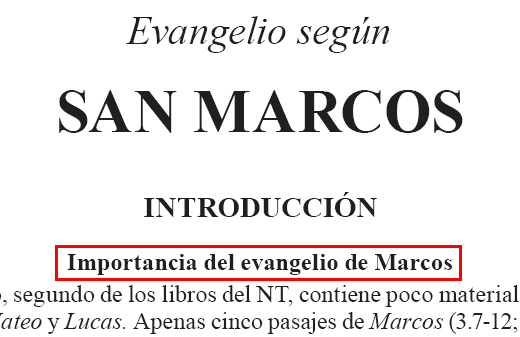
ip¶
- @style
ip
- Use
Introduction paragraph.
- Valid In
Formatting Sample - Introduction to Matthew (GNT)
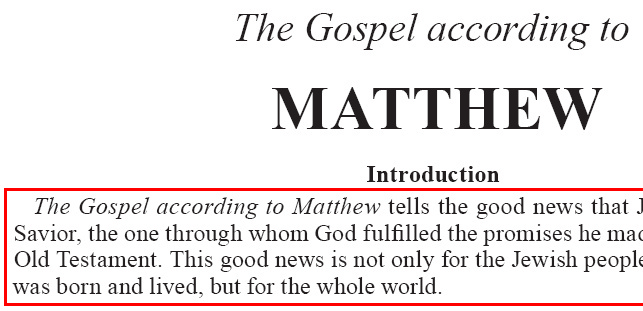
ipi¶
- @style
ipi
- Use
Indented introduction paragraph.
- Valid In
Formatting Sample - Introduction to the Deuterocanonicals/Apocrypha (GCEV)
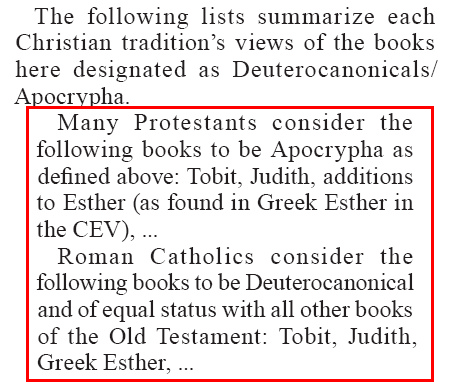
im¶
- @style
im
- Use
Introduction flush left (margin) paragraph.
- Valid In
Formatting Sample - Introduction to the GCEV
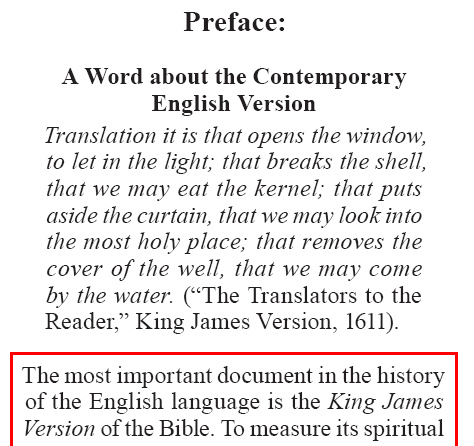
imi¶
- @style
imi
- Use
Indented introduction flush left (margin) paragraph.
- Valid In
Formatting Sample - Introduction to the GCEV
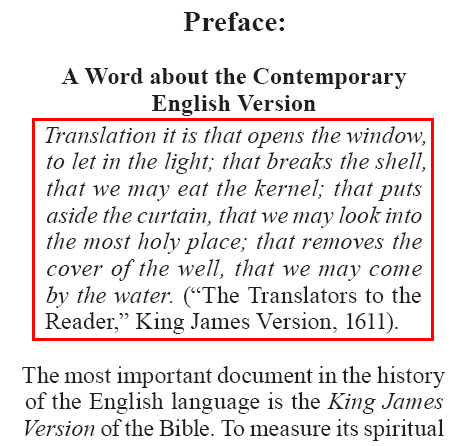
ipq¶
- @style
ipq
- Use
Introduction quote from scripture text paragraph.
- Valid In
Formatting Sample - Introduction to Genesis (CEV)
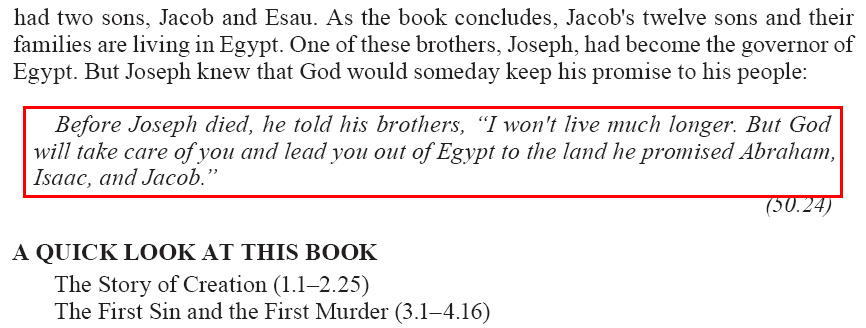
imq¶
- @style
imq
- Use
Introduction flush left (margin) quote from scripture text paragraph.
- Valid In
Formatting Sample - Introduction to Genesis (CEV)
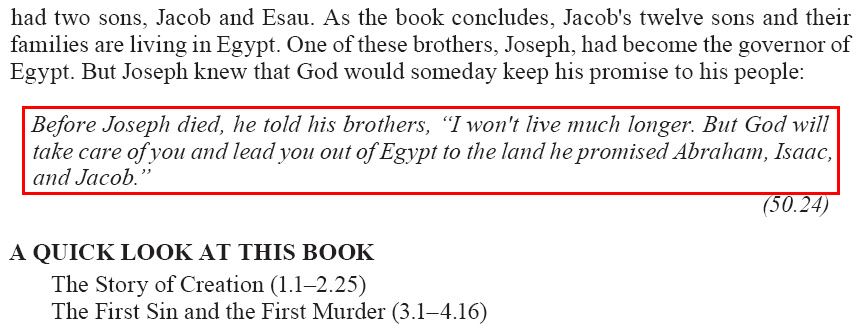
ipr¶
- @style
ipr
- Use
Introduction right-aligned paragraph.
Typically used for the reference for a quote from the scripture text (imq, ipq)- Valid In
Formatting Sample - Introduction to Genesis (CEV)
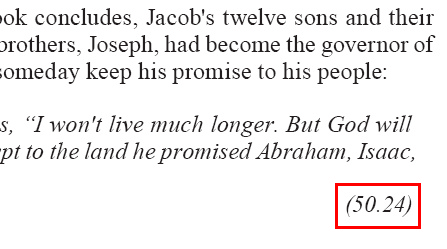
iq#¶
- @style
iq#
- Use
Introduction poetic line.
# represents the level of indent (i.e. iq1, iq2, iq3 etc.)
iq = iq1 (see notes on numbered @style attributes)- Valid In
Formatting Sample - Introduction to Titus (CEV)
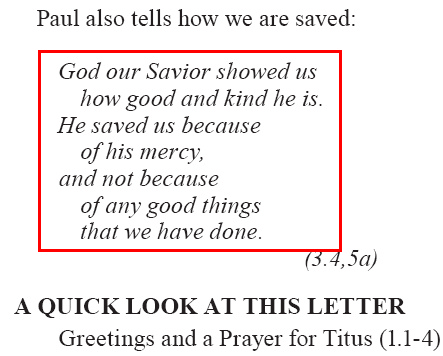
ib¶
- @style
ib
- Use
Introduction blank line.
May be used to explicitly indicate additional white space between paragraphs.- Valid In
![]() See also ipq, imq examples (above).
See also ipq, imq examples (above).
ili#¶
- @style
ili#
- Use
Introduction list item.
# represents the level of indent
ili = ili1 (see notes on numbered @style attributes)- Valid In
Formatting Sample - Introduction to Mark (Good News Study Bible)
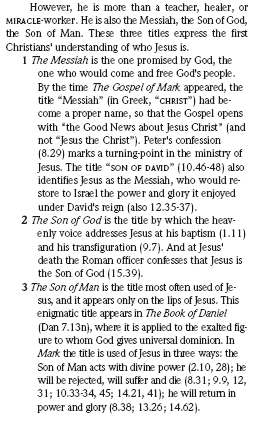
io#¶
- @style
io#
- Use
Introduction outline entry.
The outline entry typically ends with a range of references in parentheses.
References may be marked with char @style ior.
# represents the outline (indent) level. io = io1 (see notes on numbered @style attributes)- Valid In
Formatting Sample - Introduction to Mark (CEV)
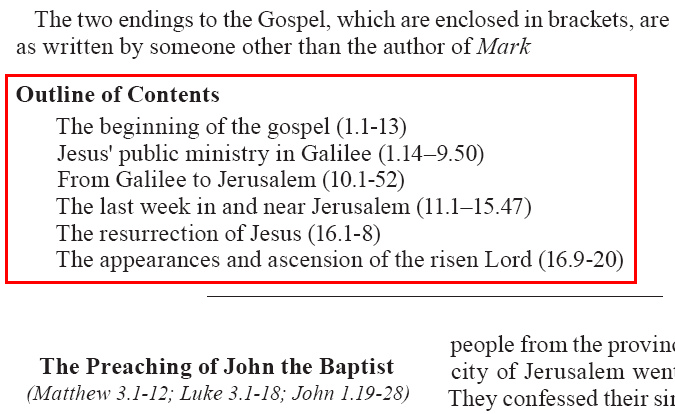
iex¶
- @style
iex
- Use
Introduction explanatory or bridge text (e.g. explanation of missing book in a short Old Testament).
 Recommended use is is for an explanation of missing book or section in a short Old Testament, or for attribution sentences found at the end of the 14 Pauline Epistles (most often found in hand written texts to identify the author, place of composition but does occur in some printed works).
Recommended use is is for an explanation of missing book or section in a short Old Testament, or for attribution sentences found at the end of the 14 Pauline Epistles (most often found in hand written texts to identify the author, place of composition but does occur in some printed works).- Valid In
Text Sample - After Romans 16 (KJV54 - BFBS)
<verse number="27" style="v" sid="ROM 16:27" /> to God only wise, <char style="add">be</char>
glory through Jesus Christ for ever. Amen.<verse eid="ROM 16:27" />
<para style="iex">Written to the Romans from Corinthus, and sent by Phebe servant of the church
at Cenchrea.</para>
imte¶
- @style
imte#
- Use
Introduction major title ending.
Used to mark a major title indicating the end of the introduction.
# represents a portion of the title, with the lesser emphasis (relative weighting) being on the higher numbers.
imte = imte1 (see notes on numbered @style attributes)- Valid In
ie¶
- @style
ie
- Use
Introduction end.
Optionally included to explicitly indicate the end of the introduction material.- Valid In
Titles and Headings¶
mt#¶
- @style
mt#
- Use
Main title.
Key components in the title of a biblical book.
# represents a portion of the title, with the lesser emphasis (relative weighting) being on the higher numbers.
mt = mt1 (see notes on numbered @style attributes)- Valid In
Formatting Sample - Introduction to Acts (GNT)

Introduction to John (GNT)

mte¶
- @style
mte#
- Use
Main title at introduction ending.
May be used in texts which repeat the main title at the end of the introduction.- Valid In
cl¶
- @style
cl
- Use
The chapter “label” to be used when the chosen publishing presentation will render chapter divisions as headings (not drop cap numerals).
- Valid In
Note
Usage note: If <para @style=”cl”>Chapter Text</para> is added to the text once before chapter 1 it represents the vernacular text for the term “chapter” to be used throughout the current book. If <para @style=”cl”> is added to the text after each individual <chapter> element, it represents the particular text to be used for the display of the current chapter heading (usually done if numbers are being presented as words, not numerals).
Text and Formatting Samples - Psalm 1 (GNT - markup adapted - general chapter label)
<para style="cl">Psalm</para>
<chapter number="1" style="c" sid="PSA 1" />
<para style="s">True Happiness</para>
<para style="q1">
<verse number="1" style="v" sid="PSA 1:1" />Happy are those</para>
<para style="q2" vid="PSA 1:1">who reject the advice of evil people,</para>
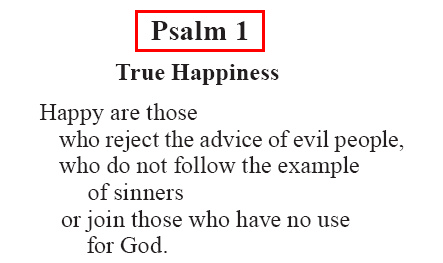
Psalm 1 (GNT - markup adapted - specific chapter label)
<chapter number="1" style="c" sid="PSA 1"/>
<para style="cl">Psalm One</para>
<para style="s">True Happiness</para>
<para style="q1">
<verse number="1" style="v" sid="PSA 1:1" />Happy are those</para>
<para style="q2" vid="PSA 1:1">who reject the advice of evil people,</para>
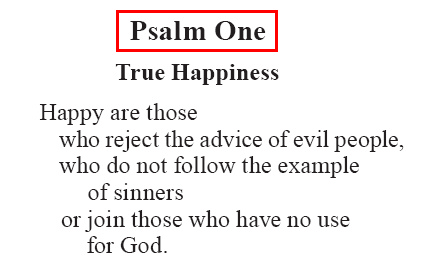
cd¶
- @style
cd
- Use
Chapter description.
A brief description of chapter content (similar to d - descriptive heading, or iex - introduction explanatory or bridge text).- Valid In
Text and Formatting Sample - Genesis 2 (Russian Synodal, Protestant Version)
<chapter number="2" style="c" sid="GEN 2"/>
<para style="cd">1 Бог благословляет седьмой день; 8 человек в раю Едемском; четыре реки;
дерево познания добра и зла. 18 Человек дает названия животным. 21 Создание женщины.
<para style="p">
<verse number="1" style="v" sid="GEN 2:1" />Так совершены небо и земля и все воинство их.
<verse eid="GEN 2:1" />
</para>
<para style="p">
<verse number="2" style="v" sid="GEN 2:2" />И совершил Бог к седьмому дню дела Свои, которые
Он делал, и почил в день седьмой от всех дел Своих, которые делал.<verse eid="GEN 2:2" />
</para>
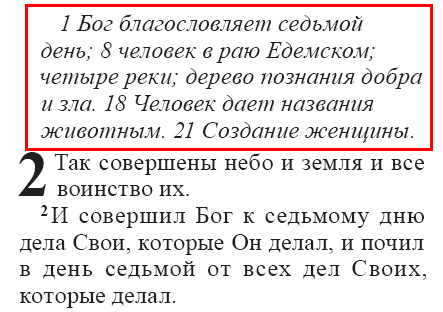
ms#¶
- @style
ms#
- Use
Major section heading. A heading added before a broader text division than what is typically considered a “section” division (see s#).
# represents the level of division.
ms = ms1 (see notes on numbered @style attributes)- Valid In
Formatting Sample - Psalm 1 (Book 1 division) (GNT)
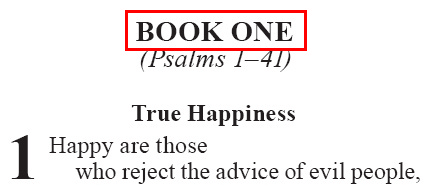
Daniel 1.1 (GNT)
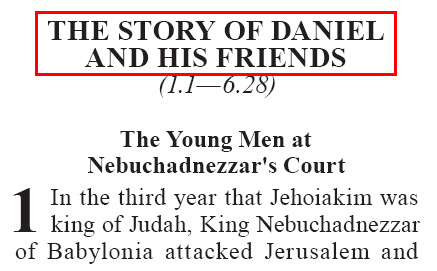
mr¶
- @style
mr
- Use
Major section reference range.
The text reference range listed under a major section heading.- Valid In
Formatting Sample - Psalm 1 (Book 1 division) (GNT)
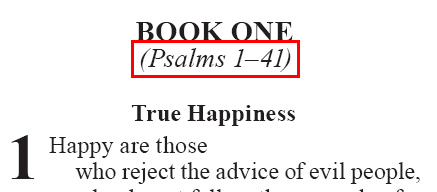
s#¶
- @style
s#
- Use
Section heading.
The typical (common) section division heading.
# represents the level of division.
s = s1 (see notes on numbered @style attributes)- Valid In
Formatting Sample - Proverbs 22.17 (GNT)
s1 example
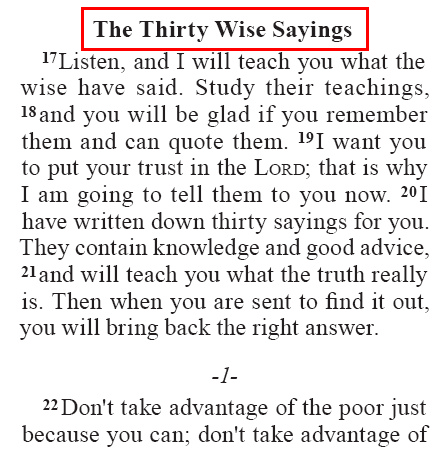
Proverbs 22.22,24 (GNT)
s2 example
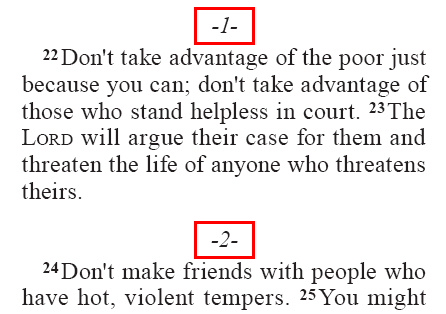
sr¶
- @style
sr
- Use
Section reference range.
The text reference range listed under a section heading.
sr is not equivalent to r which is used for marking parallel references.- See also
- Valid In
Formatting Sample - Proverbs 22.17 (GNT - markup adapted)

r¶
- @style
r
- Use
Parallel passage reference(s).
A reference to a parallel passage usually located under a section heading s#.- See also
- Valid In
Formatting Sample - Matthew 3.1 (GNT)
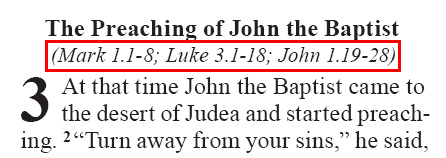
d¶
- @style
d
- Use
Descriptive title (or “Hebrew subtitle”).
Sometimes used in Psalms under the section title (e.g. “For the director of Music”).- Valid In
Formatting Sample - Psalm 3.1 (NRSV)
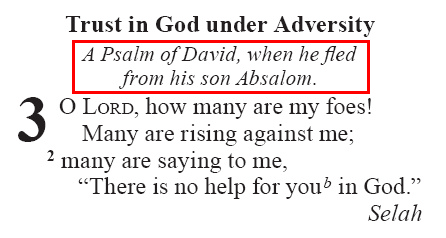
sp¶
- @style
sp
- Use
Speaker identification (e.g. Job and Song of Songs).
- Valid In
Formatting Sample - Job 3.1 (GNT)
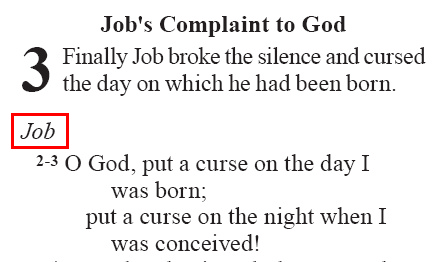
sd#¶
- @style
sd#
- Added
3.0
- Use
Semantic division (semantic space).
Vertical space used to divide the text into sections, in a manner similar to the structure added through the use of a sequence of heading texts (i.e. <para> @style ms# and s#).
The purpose of<para style="sd#">is distinct from <para> @style b which primarily denotes whitespace (and in particular at poetic stanza breaks) and not hierarchy or division. The variable # represents the level of division being marked.
sd = sd1 (see notes on numbered @style attributes)- Valid In
Text and Formatting Sample - Matthew 13.51-54 (NIV “Books of the Bible”; chapter and verse numbers suppressed in layout; new sections begin with drop capital)
<para style="m">
<verse number="51" style="v" sid="MAT 13:51" />“Have you understood all these things?”
Jesus asked.
</para>
<para style="p" vid="MAT 13:51">“Yes,” they replied.<verse eid="MAT 13:51" /></para>
<para style="p">
<verse number="52" style="v" sid="MAT 13:52" />He said to them, “Therefore every teacher of
the law who has been instructed about the kingdom of heaven is like the owner of a house who
brings out of his storeroom new treasures as well as old.”<verse eid="MAT 13:52" />
</para>
<para style="sd2" />
<para style="p">
<verse number="53" style="v" sid="MAT 13:53" />When Jesus had finished these parables, he moved
on from there.<verse eid="MAT 13:53" /> <verse number="54" style="v" sid="MAT 13:54" />Coming
to his hometown, he began teaching the people in their synagogue, and they were amazed. “Where
did this man get this wisdom and these miraculous powers?” they asked.<verse eid="MAT 13:54" />
</para>
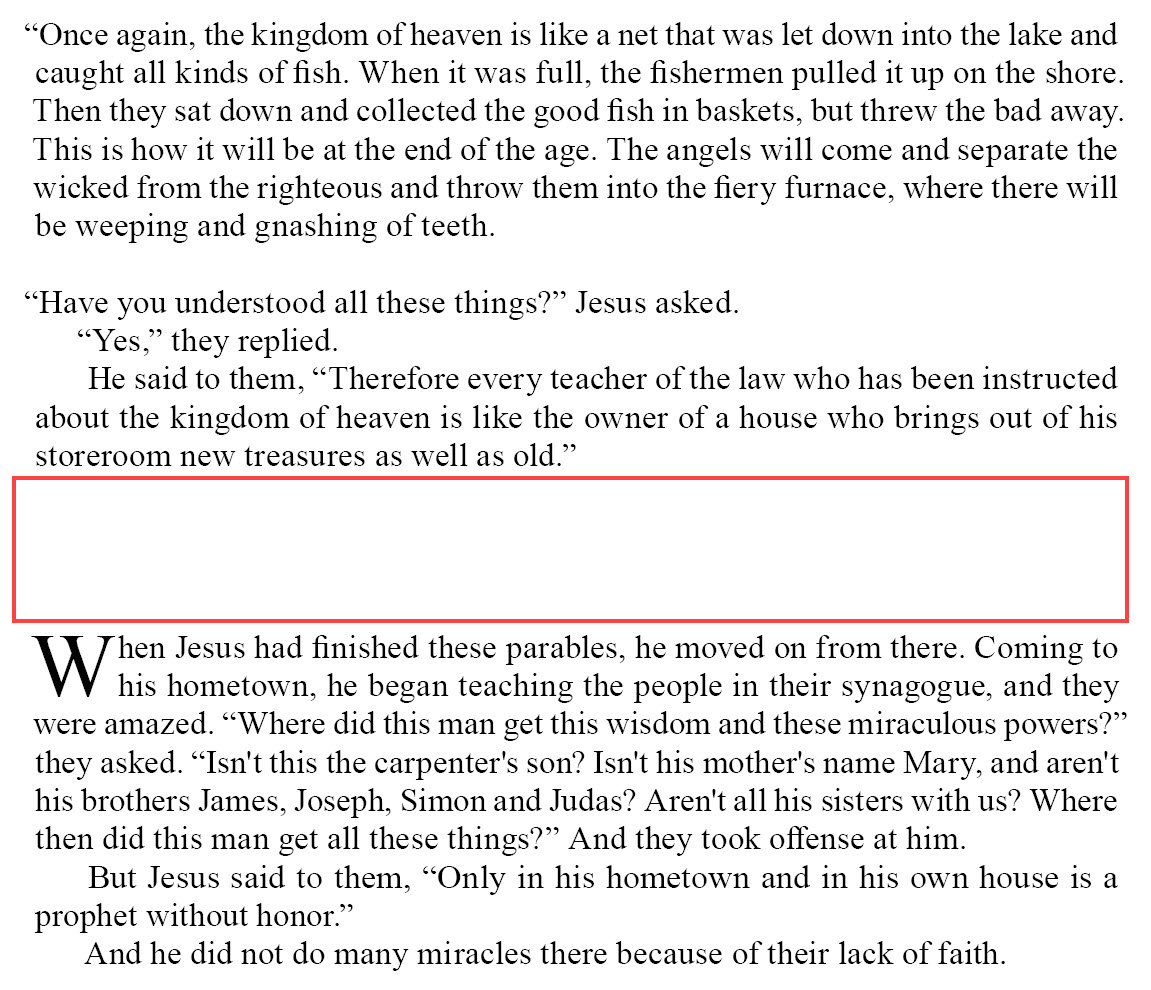
Paragraphs¶
m¶
- @style
m
- Use
Margin paragraph.
Typically used to resume prose at the margin (without indent) after poetry or OT quotation (i.e. a continuation of the previous paragraph).- Valid In
Formatting Sample - Mark 12.37 (GNT)
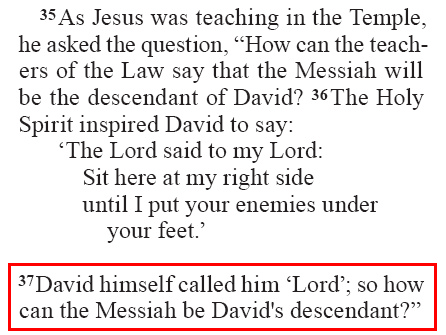
po¶
- @style
po
- Added
3.0
- Use
Opening of an epistle / letter.
- Valid In
Formatting Sample - Romans 1.1,7 (GNT)
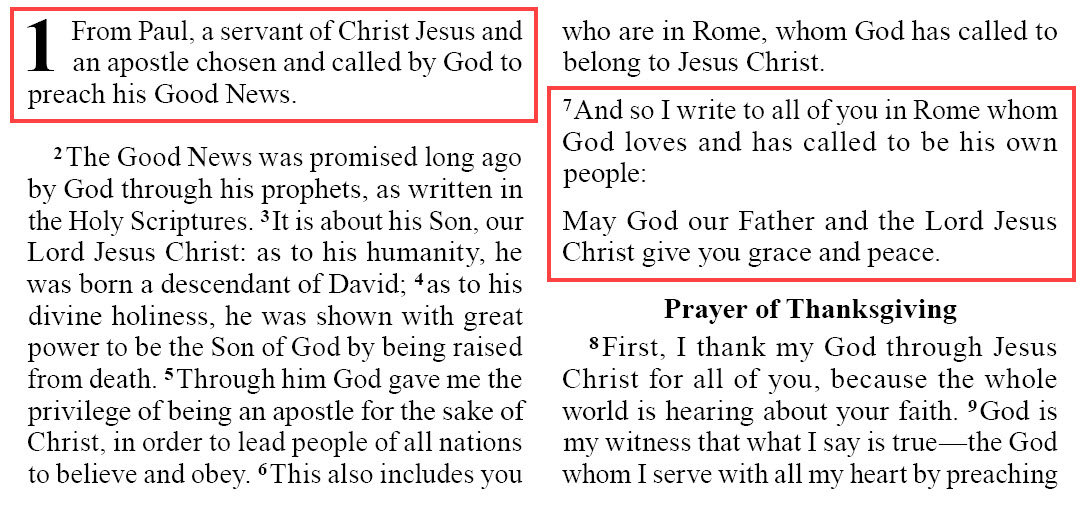
cls¶
- @style
cls
- Use
Closure of an epistle / letter
- Valid In
Formatting Sample - Colossians 4.18 (GNT - markup adapated)

pi#¶
- @style
pi#
- Use
Indented paragraph.
Used in some texts for discourse sections.
# represents the level of indent.
pi = pi1 (see notes on numbered @style attributes)- See also
- Valid In
Formatting Sample - Matthew 13.37-39 (CEV)
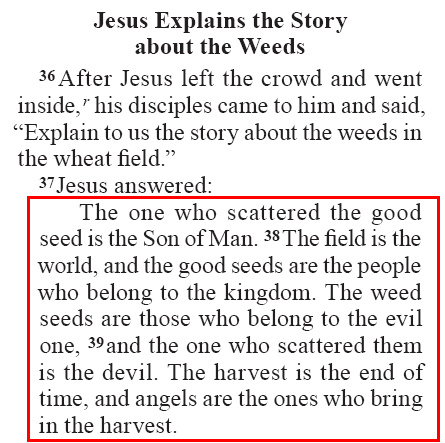
ph#¶
- @style
ph#
- Use
Indented paragraph with hanging indent.
# represents the level of indent
ph = ph1 (see notes on numbered @style attributes)
 Use is strongly discouraged.
Use is strongly discouraged.
 Recommended alternate is li#
Recommended alternate is li# - Valid In
- @style
lit
- Use
Liturgical note/comment. (e.g. a guide which tells the reader/worshiper that he/she should recite a prayer or recitation etc.)
In the formatting example image (below) the word Слава = “Glory”- Valid In
Formatting Sample - Psalm 3 (Russian Synodal, Orthodox Version)
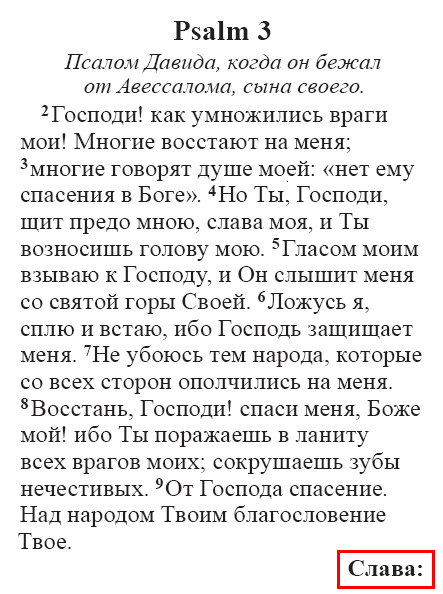
Poetry¶
q#¶
- @style
q#
- Use
Poetic line.
# represents the level of indent (i.e. q1, q2, q3 etc.). q = q1 (see notes on numbered @style attributes)- Valid In
Formatting Sample - Habakkuk 3.1-2 (GNT)
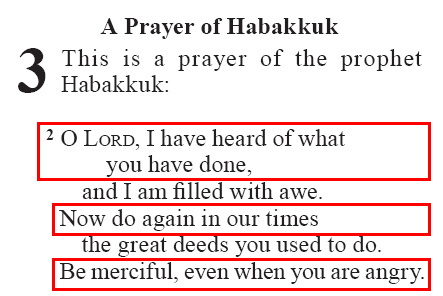
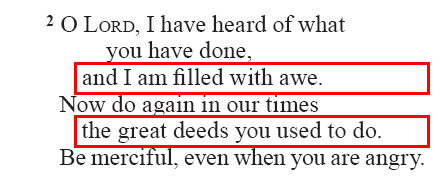
qm#¶
- @style
qm#
- Use
Embedded text poetic line.
# represents the level of indent (i.e. qm1, qm2, etc.).
qm = qm1 (see notes on numbered @style attributes)- Valid In
Formatting Sample - 1 Chronicles 12.18 (GNT - markup adapted)
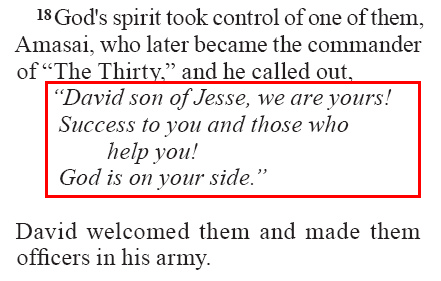
qd¶
- @style
qd
- Added
3.0
- Use
Hebrew note.
A Hebrew musical performance comment similar in content to many of the Hebrew Psalm titles (@style d), but placed at the end of the poetic section.- Valid In
Formatting Sample - Habakkuk 3:19 (NIV)
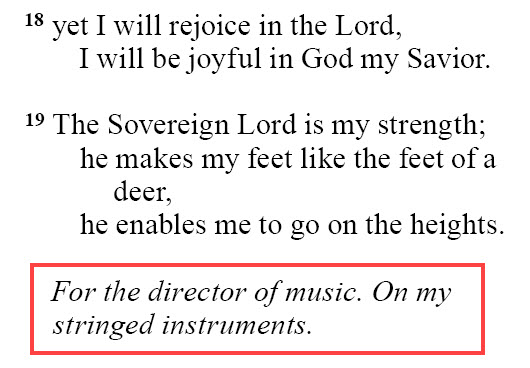
b¶
- @style
b
- Use
Blank line.
May be used to explicitly indicate additional white space between paragraphs.
 A para element with b style type should always be empty.
A para element with b style type should always be empty.
b should not be used before or after titles to indicate white-space.- Valid In
Formatting Sample - Psalm 3 (GNT)
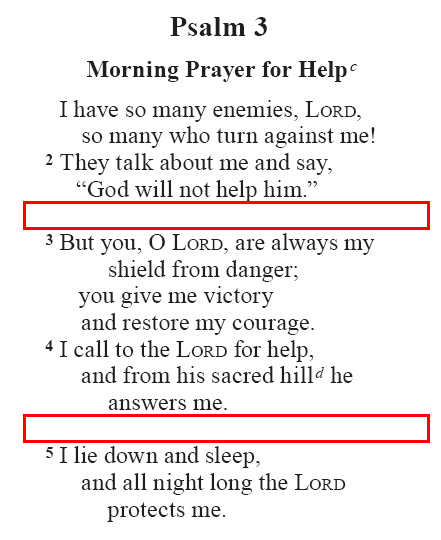
Habakkuk 3.1 (GNT)
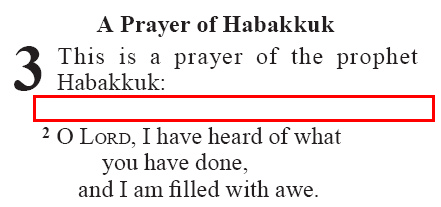
Lists¶
lh¶
- @style
lh
- Added
3.0
- Use
List header.
Some lists include an introductory and concluding remark (lf). They are an integral part of the list content, but are not list items. A list does not require either or both of these elements.- Valid In
Formatting Sample - 1 Chronicles 27:16-22 (GNT)
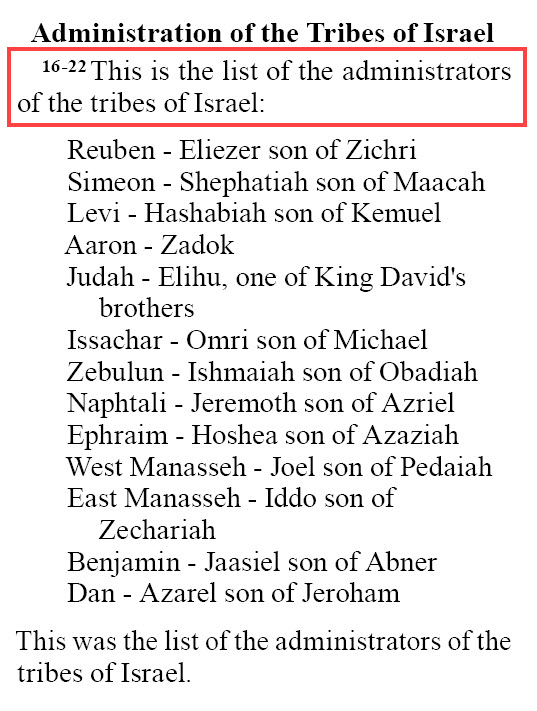
li#¶
- @style
li#
- Use
List entry.
An out-dented paragraph meant to highlight the items of a list.
# represents the level of indent
li = li1 (see notes on numbered @style attributes)- Valid In
Formatting Sample - Numbers 7.84-88 (GNT)
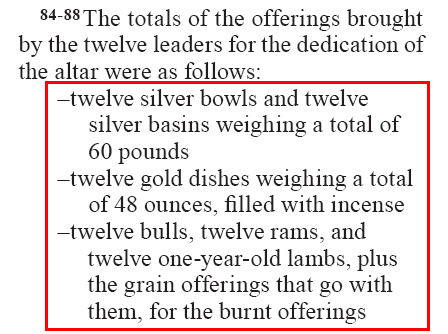
lf¶
- @style
lf
- Added
3.0
- Use
List footer.
Some lists include an introductory (lh) and concluding remark. They are an integral part of the list content, but are not list items. A list does not require either or both of these elements.- Valid In
Formatting Sample - 1 Chronicles 27:16-22 (GNT)
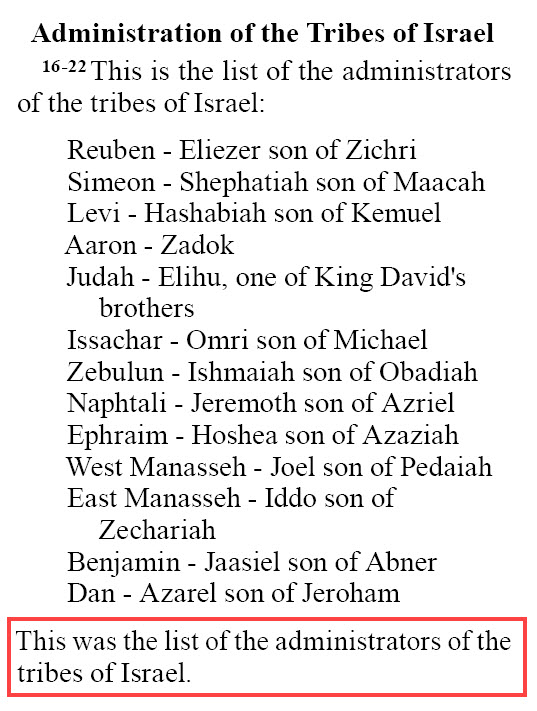
lim#¶
- @style
lim#
- Added
3.0
- Use
Embedded list entry.
An out-dented paragraph meant to highlight the items of an embedded list.
# represents the level of indent
lim = lim1 (see notes on numbered @style attributes)
 See also li
See also li- Valid In
Formatting Sample - Nehemiah 7.4-25 (NIV)
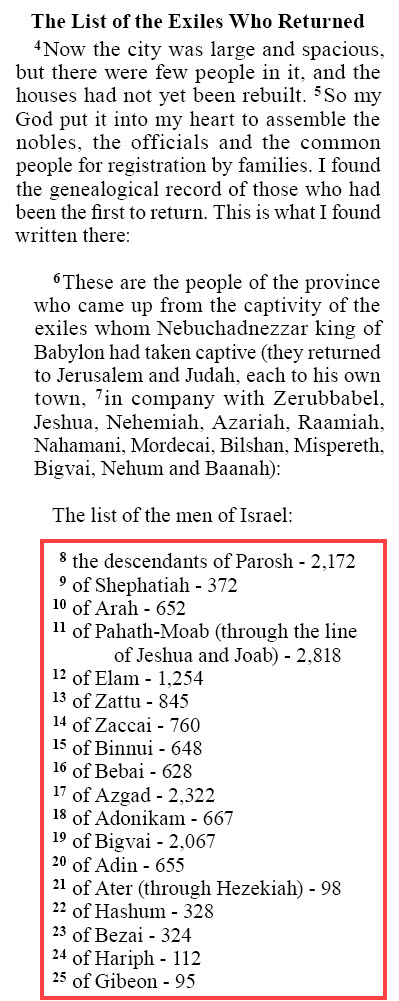
Structured List Entries¶
![]() See <char> @style types for structured lists entries.
See <char> @style types for structured lists entries.
